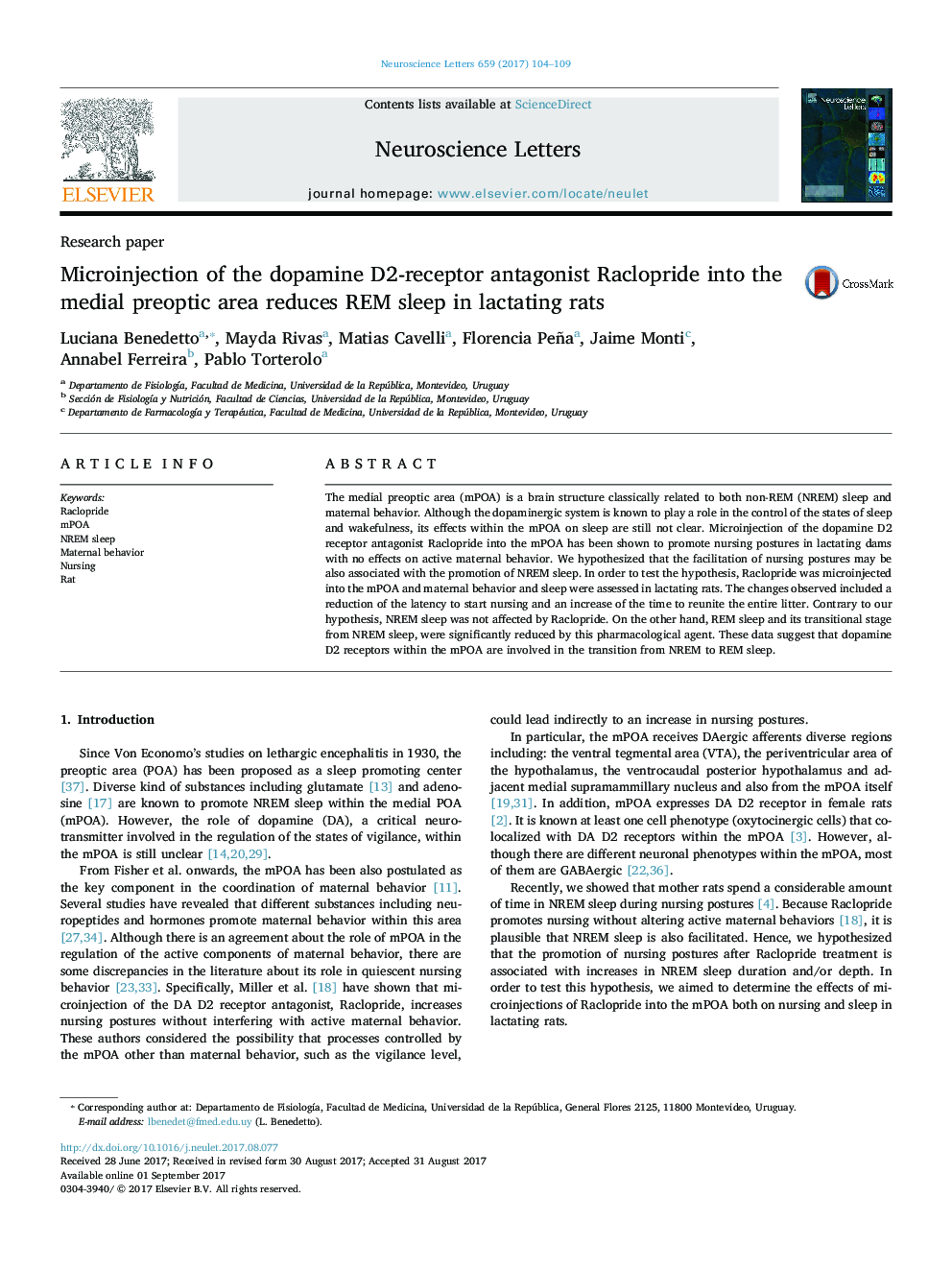| Article ID | Journal | Published Year | Pages | File Type |
|---|---|---|---|---|
| 5738181 | Neuroscience Letters | 2017 | 6 Pages |
â¢Raclopride (RAC) administration into the mPOA of mother rats reduces REM sleep.â¢RAC administration into the mPOA of mother rats does not modify NREM sleep.â¢RAC administration into the mPOA reduces nursing latency.â¢RAC administration into the mPOA increases the latency to the reunion of the litter.
The medial preoptic area (mPOA) is a brain structure classically related to both non-REM (NREM) sleep and maternal behavior. Although the dopaminergic system is known to play a role in the control of the states of sleep and wakefulness, its effects within the mPOA on sleep are still not clear. Microinjection of the dopamine D2 receptor antagonist Raclopride into the mPOA has been shown to promote nursing postures in lactating dams with no effects on active maternal behavior. We hypothesized that the facilitation of nursing postures may be also associated with the promotion of NREM sleep. In order to test the hypothesis, Raclopride was microinjected into the mPOA and maternal behavior and sleep were assessed in lactating rats. The changes observed included a reduction of the latency to start nursing and an increase of the time to reunite the entire litter. Contrary to our hypothesis, NREM sleep was not affected by Raclopride. On the other hand, REM sleep and its transitional stage from NREM sleep, were significantly reduced by this pharmacological agent. These data suggest that dopamine D2 receptors within the mPOA are involved in the transition from NREM to REM sleep.
